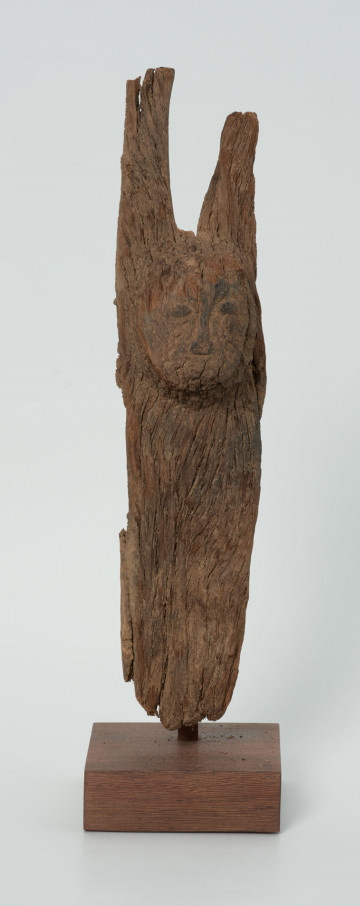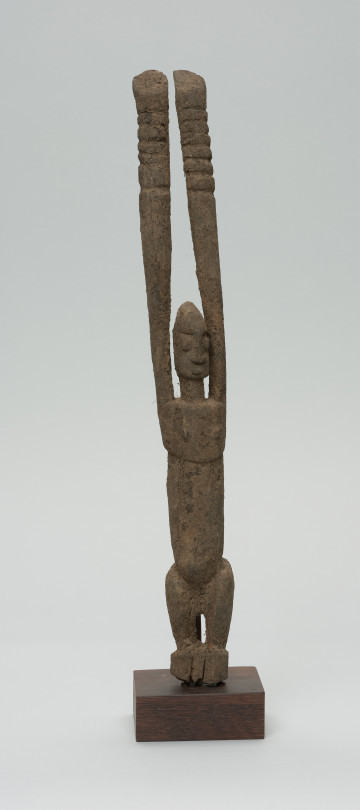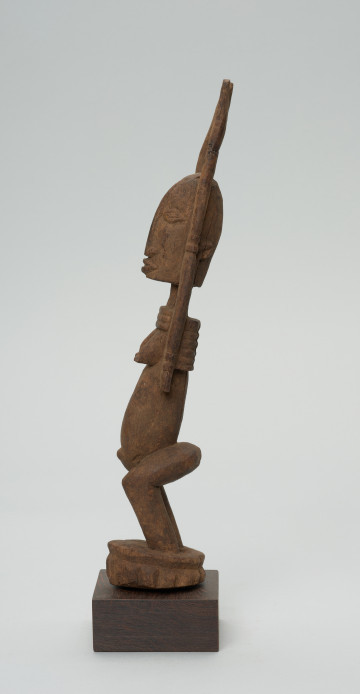
Figure - ancestor
między 1901 — 1950
National Museum in Szczecin
Part of the collection: Collection of Dogonian art
The Dogon are mainly farmers who must cope with very difficult conditions. They inhabit around 700 villages. Most of them are small clusters of homesteads with no more than 500 inhabitants and only a few have more than 1000 inhabitants. Although the Dogon live on a plateau which descends gradually towards the Niger River and on the vast, flat plains of Gondo and Seno stretching from the foot of the Bandiagara Escarpment to the border with Burkina Faso, the most densely populated villages are those located along the scree - the rocky debris at the foot of the Massif. There is no permanent source of water in the Dogon country, and rainfall occurs only during the rainy season, between June and October. The soil on the rocky plateau and cliffs and the sandy plain is very poor and must be constantly enriched. The Dogon have developed excellent agricultural techniques adapted to the harsh environment, but they nevertheless seek spiritual help to ensure their livelihood. Their annual rituals and ceremonies are dominated by prayers for rain and a healthy and abundant harvest of the main crops grown: millet, sorghum, rice and fonio. The figure represents an ancestor with his hands raised in the air. The gesture is interpreted as a prayerful effort to unite earth and sky. The sign of this alliance is rain, so important to the agricultural Dogon. It is believed that originally the Tellem, mysterious people who inhabited the Bandiagara Escarpment before the arrival of the Dogon, carved their ancestors in this way. The motif has blended into the Dogon tradition, and its connection with the Tellem is only evidenced by the name tellem, which is used to describe the figures.
Ewa Prądzyńska
Other names
tellem; dege
Author / creator
Dimensions
cały obiekt: height: 40 cm, width: 7,5 cm
Object type
figure
Creation time / dating
Creation / finding place
Identification number
Location / status

między 1901 — 1950
National Museum in Szczecin

między 1901 — 1950
National Museum in Szczecin

między 1951 — 2000
National Museum in Szczecin
DISCOVER this TOPIC
Museum of King Jan III's Palace at Wilanów
DISCOVER this PATH
Educational path